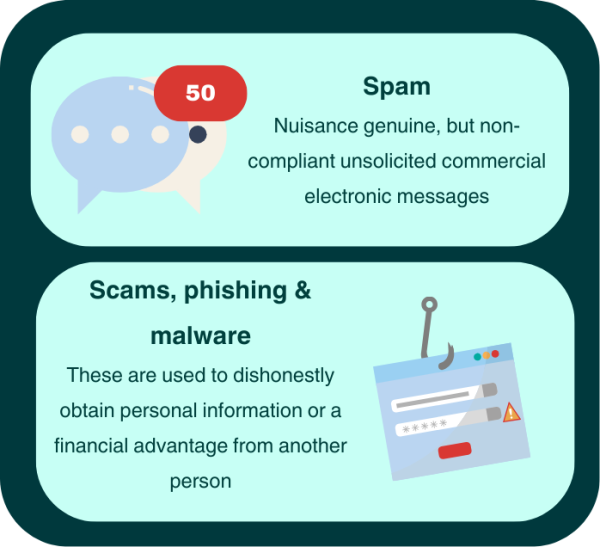What is unsolicited messaging?
Spam refers to nuisance messaging; this includes genuine, but non-compliant unsolicited commercial electronic messages such as any unwanted email, fax, SMS text message, or other instant message that is commercial by nature.
Spam includes scam messages; SMS, email or other digital messages that contain phishing links, malware or other means of dishonestly gaining a financial advantage.
Different types of spam
There are different types of spam:

Nuisance spam refers to unsolicited commercial messages sent from a legitimate source (like a business). You should only receive a commercial message when:
- you have given consent, such as ticking a box on a website or filling in a form to receive messages
- the organisation sending the message is clearly identified
- there are clear instructions on how to unsubscribe from the messages if you wish.
On the other hand, scams, phishing and malware are examples of harmful messaging. They are created with the intention to harm the recipients.
Protect yourself against scams
The Department of Internal Affairs has created a helpful checklist of steps you can take to reduce your risk of being scammed. To download the checklist visit their website(external link).